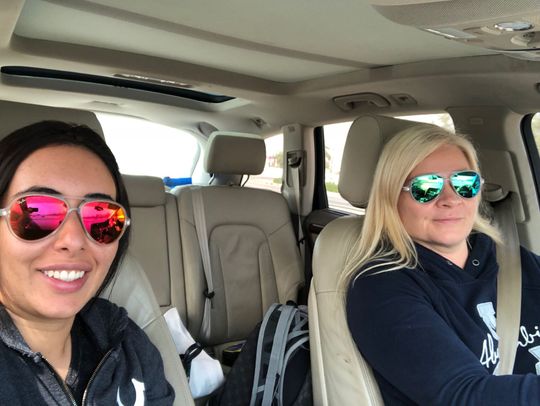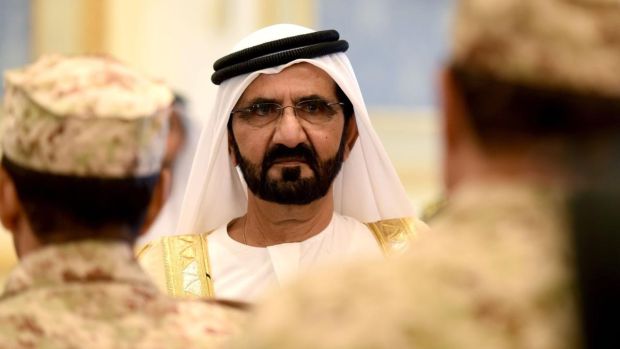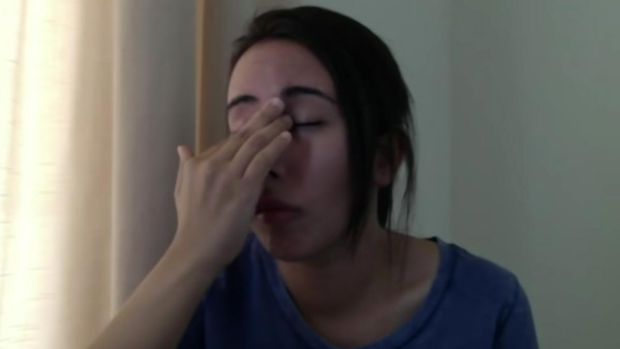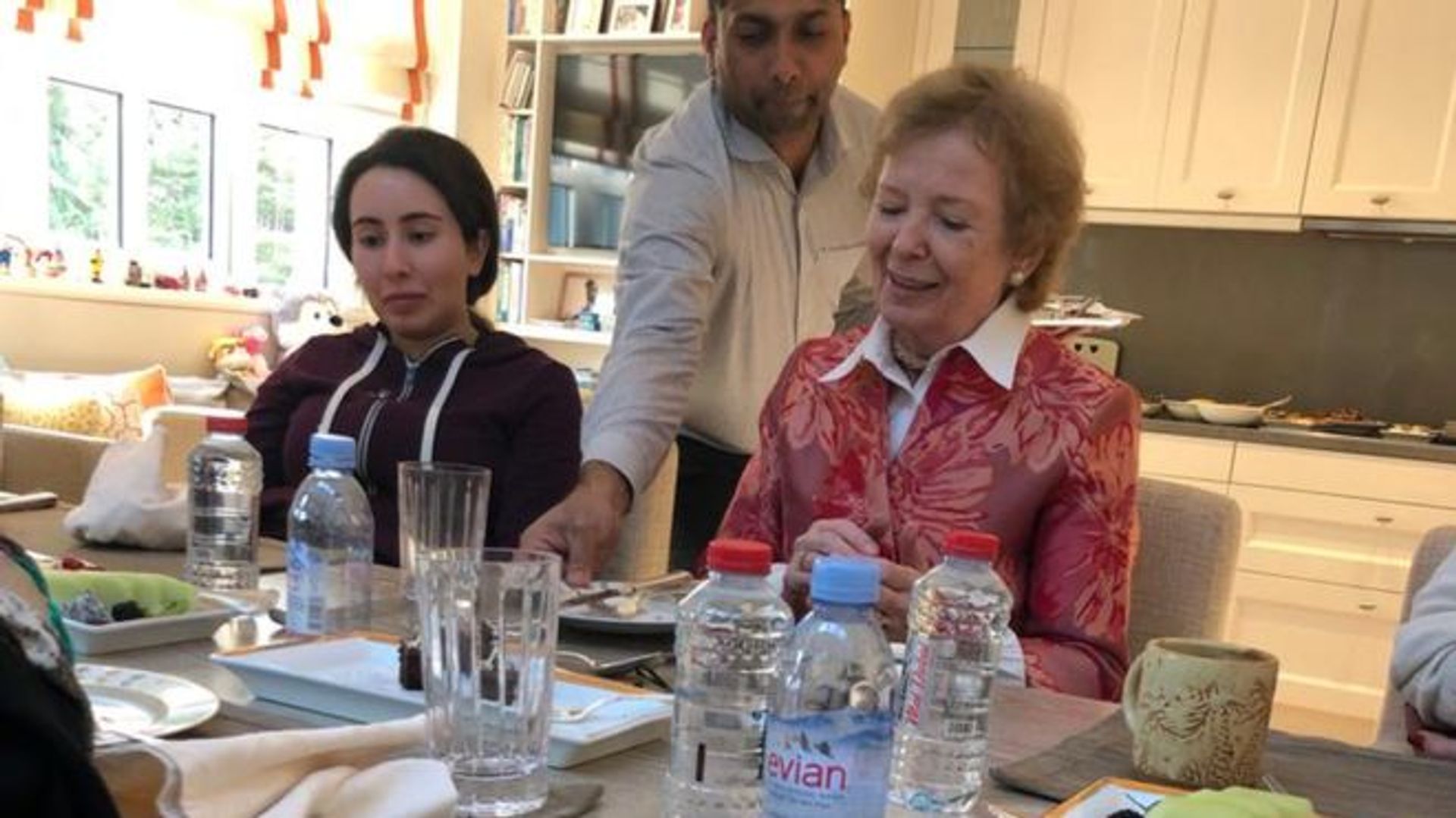Radhika Sanghani
March 6, 2019, The Irish Times
Mary Robinson was criticised for becoming a ‘willing pawn’ in the Princess Latifa case

“I wish I’d said something to her when they were taking her away,” Tiina Jauhiainen says, looking down at her now cold tea. We are in a cafe in London, but Jauhiainen’s mind is 8,000km away in the Arabian Sea, reliving the night of March 4th, 2018, when she tried to help her best friend escape from her family. “There were guns everywhere. Latifa was screaming and kicking. But I was paralysed with fear. I couldn’t say a word.” She pauses. “I just wish that I’d said, ‘I’m sorry this has failed.’ That I’d told her I love her.”
That was the last time that Jauhiainen, who is 42, saw Latifa bint Mohammed al-Maktoum, the 33-year-old daughter of Mohammed bin Rashid al-Maktoum, ruler of Dubai and prime minister of the United Arab Emirates. The women were captured and separately taken back to Dubai, the emirate from which they had been trying to escape. But while Jauhiainen was released after a fortnight, Latifa’s whereabouts are still unknown.
This week is the first anniversary of the escape. The women fled Dubai via car, dinghy and yacht, with the goal of making it to India. From there, Latifa could fly to the United States and claim asylum. The escape attempt had been planned over seven years.
Latifa wasn’t allowed to study, to work, to travel – or even to go to a friend’s house. She had curfews. She was treated like a child
“People think, She’s a princess, how bad could her life be?” Jauhiainen says. “She did have access to money, but that was just a distraction from her reality. She wasn’t allowed to study, to work, to travel – or even to go to a friend’s house. She had curfews. She was treated like a child. She used to get depressed if she had to spend a day at home. She didn’t even call her home a home. She called it a house and hated it.”
Jauhiainen, who grew up in Finland, had been living in Dubai since 2001, having moved there after graduating from London South Bank University. She met Latifa in 2010, when the princess hired her for private capoeira lessons. “I saw her on a daily basis from then on,” Jauhiainen says. “Because she’s not allowed to work or study, when she starts a new hobby it becomes her purpose for getting up in the morning.” In 2013, the friends learned to skydive together. “That used to give her a great sense of freedom. By the end, she’d done around 2,500 jumps.”
As the women grew closer, Latifa began to open up more about her life. In 2016, she told Jauhiainen that her older sister, Shamsa, had tried to escape her family while on holiday at their Surrey estate in 2000. She had been seized on the streets of Cambridge in an apparent abduction that was never fully investigated by police. Latifa claimed her sister spent the next eight years imprisoned and had been drugged by her family. That was the last time either of the sisters went abroad. Shamsa has not been seen in public since.
In 2002, when Latifa was 16, she tried to escape by driving to Oman. But she was caught at the border, she told Jauhiainen, before being imprisoned for three and a half years, during which time she claimed she was tortured. “One guy was holding me and the other guy was beating me,” Latifa has said. “They told me: ‘Your father told us to beat you until we kill you.’”

Photograph: Fayez Nureldine/AFP
“I didn’t hesitate when she asked me to help her escape,” Jauhiainen says. “She’d been the most amazing friend to me, and she didn’t deserve any of this. I wanted to help her to be free and just live her life like a normal woman.”
After nine months of planning, Latifa and Jauhiainen left Dubai on February 24th, 2018. They went to a cafe for breakfast (one they had been visiting for weeks to avoid raising suspicions), where Latifa left her phone, so it couldn’t be traced, and took off her full-length abaya robe. They drove to Oman – “It was Latifa’s first time sitting in the front of a car, so we took selfies,” Jauhiainen says – and from there took a dinghy 25km off the coast of the capital, Muscat. There, they were met by a French former naval officer, Hervé Jaubert, whom they had enlisted to help with the escape. He took them another 25km on jet skis to the yacht, where his Filipino crew were waiting.
“The whole day was crazy,” Jauhiainen says. “We were both full of adrenaline, and the sea had been rough, with 2m waves, so we kept falling off the jet skis. When we made it to the boat, we were so relieved that part of the journey was done. But, of course, during the next couple of days on the boat, Latifa became increasingly worried about what was happening, knowing what her father was capable of.”
My hands were tied, and I was taken to the side of the deck, where two men pushed me towards the water and threatened to shoot my brains out
Eight days later, the boat was boarded by Indian coastguards. Latifa and Jauhiainen were in their cabin when they heard screaming and shots. “We locked ourselves in the bathroom and hugged each other. Latifa kept saying: ‘Oh God, they’ve found me. They’ve come to get me.’ It was terrifying. Then the cabin started to fill with smoke.”
They were forced to go outside, holding hands, and were met on the upper deck with guns pointed at them. “It was unreal, like something from the movies,” Jauhiainen says. “My hands were tied, and I was taken to the side of the deck, where two men pushed me towards the water and threatened to shoot my brains out. Latifa was at the front. She kept repeating that she was seeking political asylum, but she was taken, kicking and screaming. Her last words were: ‘Don’t take me back – just shoot me here’.”
Before their escape, Latifa had recorded a video detailing her allegations about her life in Dubai, from the way women are viewed as “disposable” to the actions of her “pure evil” father. It was their insurance policy; it was released on YouTube as soon as she was captured. To date, it has had more than 2.8 million views. Jauhiainen believes the ensuing media attention was the reason she was released after a fortnight in a United Arab Emirates jail. “Latifa didn’t want her story to be in vain – she wanted to be heard,” Jauhiainen says. “For her, it was a life-or-death situation. She always knew the risks, but said she felt she had nothing to lose.”

Photograph: Princess Latifa/YouTube
For months after the capture, Jauhiainen had no idea if Latifa was alive or dead. Then, in December, a photo was released of Latifa sitting beside Mary Robinson. The former president of Ireland and United Nations high commissioner for human rights told the BBC she had seen the princess, who was “troubled” and “in the loving care of her family”. Robinson’s comments were met with widespread scorn – one human-rights activist accused her of being a “willing pawn” in Dubai’s public-relations campaign.
“I was just so relieved to see Latifa was alive,” Jauhiainen says. “But she looked so unwell, and her face was puffy. She wasn’t even looking at the camera. It looked like a set-up. She always said that, if she was caught, her family would try to discredit her by saying she’s mentally unstable. It’s not uncommon in the Arab world,” she says, pointing to the case of the 18-year-old Saudi woman Rahaf Mohammed al-Qunun, whose father called her “mentally unstable” after she fled her country and was given asylum in Canada.
Latifa’s family has only once commented on her escape, saying in early December, “Her Highness Sheikha Latifa is now safe in Dubai.” The statement, issued on her 33rd birthday, added that Latifa and “her family are looking forward to celebrating her birthday today, in privacy and peace, and to building a happy and stable future for her”.

Photograph: HO/WAM/AFP
Jauhiainen says she won’t rest until Latifa is free. She spends her days running the #FreeLatifa campaign full time. “Sometimes it’s hard,” she says. “The sad reality is that I have a whole government against me. It’s been difficult to get people to see Latifa as a normal woman who has been oppressed her whole life and not just a princess. But Latifa always wanted her story to be heard. She can’t tell it now, but I can, so I feel I have to be her voice.”
Latifa’s story is supported by human-rights organisations such as Detained in Dubai and Human Rights Watch, and is under investigation by the UN’s working group on enforced or involuntary disappearances, to which Jauhiainen gave evidence in Sarajevo last month.
Jauhiainen never expected still to be fighting for Latifa’s release a year on from her capture. The anniversary has been emotionally difficult, she says. “Sometimes I think everything I’ve done hasn’t made a difference. But, in a way, it has. Millions of people know about her story now, and these things just don’t happen as fast as I imagined. I dream about her release a lot, about what the reunion would be like.”
She smiles as she talks about everything she wants to do with her best friend. “I want to introduce her to my family in Finland, who are desperate to meet her, and to show her London, travel, tell her all these crazy stories. Most of all,” she says quietly, “I just want to talk to her. I miss her.”